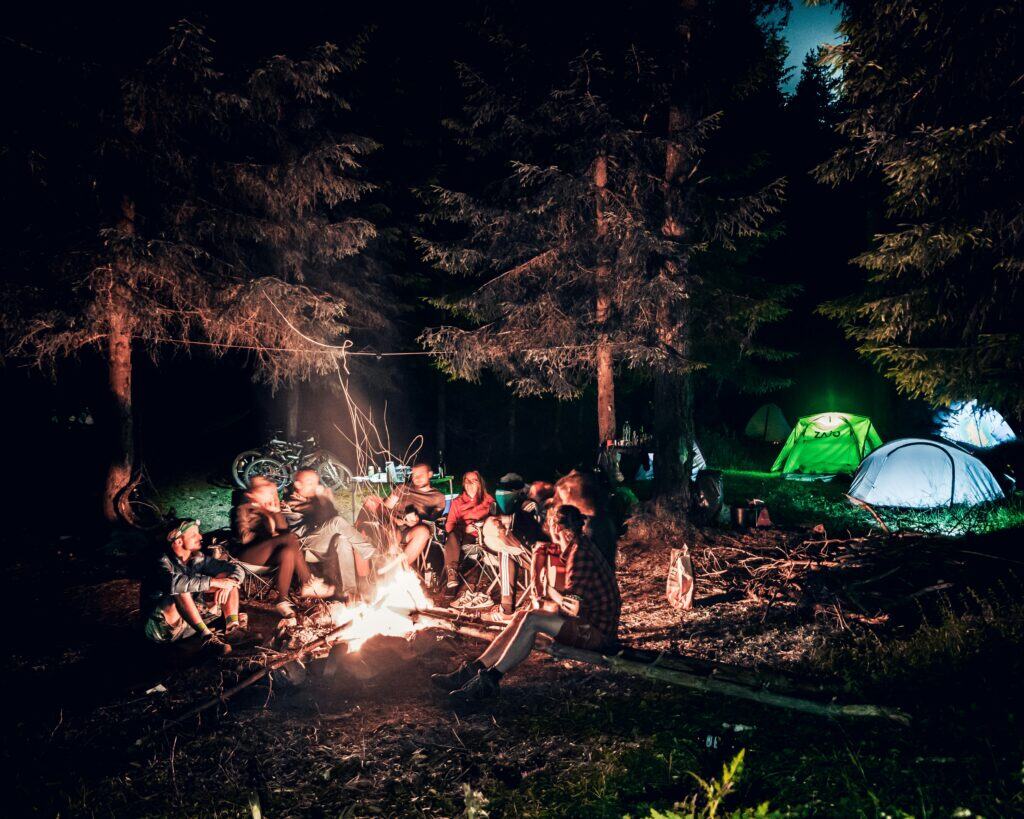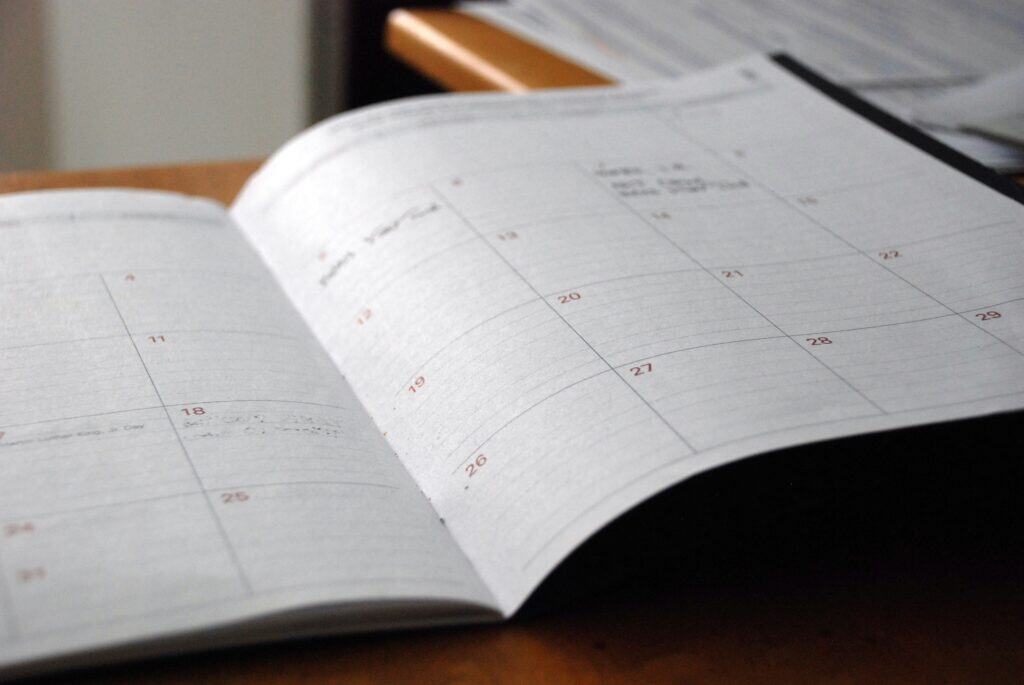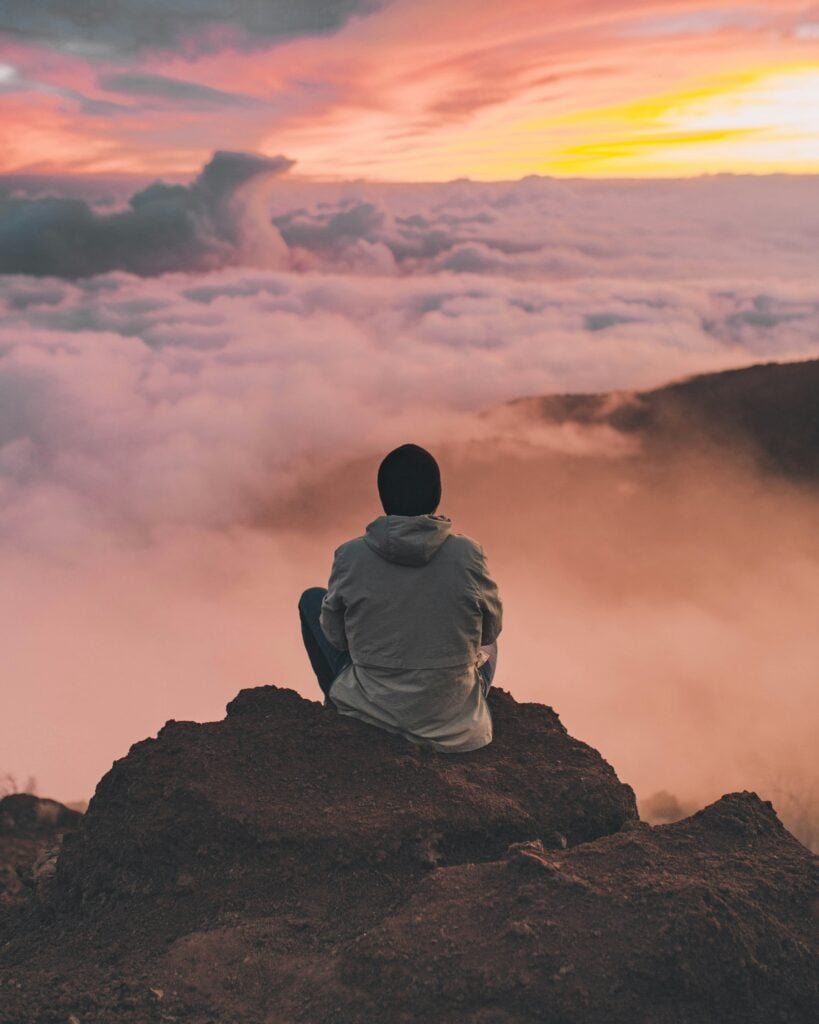How to Stay Connected to Loved Ones While Building a Glamping Campsite and Working Full-Time

Building a glamping campsite while working full-time can be a good way to go. You want to turn your vision into reality but still need the stability and the income that a full-time job brings -but it’s important to be prepared for the time and energy it takes. Between the long workdays, endless to-do lists, and the constant push to create a space where others can relax and reconnect, it’s easy to lose touch with the very people who matter most: your family, friends, and loved ones. If you’re in the thick of building a retreat while holding down a 9-to-5 (or longer), staying connected is possible—and essential. Here are 10 real-world strategies for maintaining meaningful relationships while living a busy, hands-on life. 1. Set Shared Expectations Start with open, honest conversations. Let your loved ones know what you’re building, why it matters to you, and how it might affect your time and energy. When people understand your schedule and your passion, they’re more likely to support you—and feel included rather than left behind. 2. Make Them Part of the Process Invite your partner, kids, or close friends into the project in small ways: Involvement builds connection and turns the project into a shared adventure. 3. Create Protected Time for Connection Treat your relationships like they matter (because they do!) by carving out regular, protected time. That could mean: It’s not always about the amount of time—it’s about being fully present in the time you do have. 4. Use Technology Intentionally Use tech tools to bridge the gap when you can’t be physically present: Group chats can also help keep everyone involved. 5. Celebrate Small Wins Together Don’t wait until the grand opening to celebrate. Share the little victories: Celebrating together deepens the feeling that you’re all in it as a team. 6. Be Honest About Burnout You don’t have to pretend everything is fine. Let your people know when you’re tired or overwhelmed. Being real builds trust—and gives them a chance to show up for you, too. Self-care isn’t selfish. The healthier you are, the more you can give to others. 7. Involve Them in the Bigger Dream Remind your loved ones that the goal isn’t just a business—it’s a future. Maybe it’s a family legacy, a lifestyle shift, or a dream to host loved ones on your land. Make it clear: you’re not just building a campsite. You’re building a life. 8. Keep a Sense of Humor Things will go wrong. Plans will fall through. You will get caught with your pants down. Laugh often, especially when things don’t go according to plan. Humor lightens the load and reminds you—and everyone around you—not to take it all too seriously. 9. Build in Offline Weekends Every few weeks, step away from the work. Turn off your phone. Go camping yourselves. Visit family. Do nothing. These breaks reset your energy and your relationships. Work will still be there on Monday. But connection needs attention now. 10. Presence Over Perfection You don’t need to do everything perfectly. You just need to show up. A short walk, a heartfelt text, a quick coffee chat—those small moments of real presence add up. Focus on presence, not perfection. That’s what keeps love alive. Final Thoughts Yes, building a glamping business while working full-time is a huge undertaking. But don’t let it cost you the relationships that give your life meaning. With intention, communication, and small daily actions, you can build not just a beautiful retreat, but a deeply connected, meaningful life. Want more behind-the-scenes stories and tips from the campsite? Join the GlampSite Joe e-mail list for regular updates. Photo by Tanner Marquis on Unsplash Photo by Nathan Dumlao on Unsplash Photo by Ivan Dimitrov on Unsplash
Recharging Under the Stars: Why Camping is the Perfect Escape for Active and Retired First Responders

Every day, first responders— police officers, firefighters, EMTs, and paramedics—stand on the front lines of crisis, trauma, and emergency. Their selfless commitment often comes at a personal cost, with long hours, emotional strain, and exposure to traumatic events taking a heavy toll. At Glampsite Joe, we recognize the incredible service these heroes provide, and we believe they deserve a chance to truly unwind, recharge, and reconnect—with nature and with themselves. That’s why we’re proud to announce the 12 Knights project. This season we are setting aside 12 free nights of glampsite camping for both active and retired first responders. It’s a small gesture of gratitude for the immense sacrifices they make. We know firsthand about the profound healing power of nature, and the unique benefits that camping can offer those who dedicate their lives to helping others. This is a way to show gratitude and to share. The Invisible Weight of a Hero’s Duty The public sees their uniforms and quick actions, but behind the scenes, first responders bear the weight of life-and-death situations daily. Studies indicate that between 15% and 37% of first responders may experience symptoms of PTSD, compared to about 7% in the general population. As many as 30% of first responders develop behavioral health conditions, including PTSD, compared to 20% in the general population. The numbers are even higher in high-trauma regions or in the aftermath of major disasters. Chronic stress, sleep disruption, and cumulative trauma can lead to burnout, relationship struggles, and long-term health issues. These aren’t just statistics—they’re realities faced by people we rely on every day. The need for restorative, meaningful breaks from the front lines and from the potentially isolating retirement that comes after is not just a luxury—it’s a necessity. Nature: A Timeless Prescription More and more mental health professionals are turning to ecotherapy—also known as nature therapy—as a powerful tool for healing. Time in natural surroundings has been proven to: One study from Stanford University found that walking in nature decreased activity in the part of the brain linked to rumination and worry. Another, published in Frontiers in Psychology, found that time spent camping significantly improved well-being, especially for individuals recovering from high-stress occupations. Why Camping Hits Different There’s something uniquely powerful about camping. It’s more than just staying outdoors—it’s about immersing yourself in a slower, more mindful pace of life. No alarms. No sirens. No deadlines. No need to worry. Just fresh air, starry skies, and the rhythm of nature. For first responders, this environment offers: Camping reintroduces something many first responders don’t realize they’ve lost: the freedom to simply be. Our Campsite: A Space for Restoration Located in Allegany County in Upstate New York (about an hour away from Buffalo and from Rochester), our glamping campsite is located on 25 acres of land that has been in the family since the 1800s. Home base consists of two small camping cabins with all the creature comforts. Tent camping spots near the creek are also available. Last year was our first full hosting season – we’re proud to say that we earned Super Host and Guest Favorite on Airbnb for the past three quarters! This is a true labor of love. The mission is to create a space where a connection can be made – with nature, with family and friends, and with yourself. So far the mission is going well! Personal note: I know about the weight that the job can bring. I also know that, it in some ways, retirement can be even harder at times. I served as a police officer for 20 years and still serve in the mental health crisis management field. This place has always brought peace when I needed it most. It’s time to share it. 12 Knights This year, we’re opening up 12 free camping nights specifically for first responders, active or retired. Each night in one of our cabins (or tent, if preferred) is an opportunity to rest, reflect, and recharge without cost or obligation. How it works: Why We’re Doing This Our motivation is simple: we believe in giving back to those who give and who have given so much of themselves. Whether you’re a paramedic who’s worked every holiday, the retired police officer navigating PTSD, or the firefighter battling burnout, you deserve a space to breathe again. This mission is personal. We know the toll that giving so much of yourself can take—and the joy that returns when time is found to reconnect with nature. Please spread the word If you know an active or retired first responder who could use a night under the stars, please encourage them to inquire—or nominate them yourself. Camping is not a cure-all. But it can be a chance to breathe, and a beginning. For those who carry so much, it’s our privilege to offer even a few nights of lightness. Thank You At the end of the day, this isn’t just about camping. It’s about gratitude, healing, and giving something back to the people who rarely ask for anything. For our 12 Knights guests and for all of our guests, we hope our campsite becomes a haven that helps them as much as it has helped us. To the active and retired first responders out there: thank you. You are appreciated. And you are always welcome here—under the stars, by the fire, and away from the noise.
The 4- Hour Workweek and Cabin Cluster Hosting

This blog is about managing the time and effort it takes to start and run a glamping campsite. The 4-Hour Workweek by Timothy Ferriss offers a ton of information about working smarter and not harder. Here’s how short-term rental hosts can apply what he teaches and find better work-life balance. Death and Taxes We don’t regret putting money, time and energy into getting our glamping campsite off the ground. Being a project we’re so passionate about, it’s easy to lose track of all that has been invested so far. But reviewing the final spreadsheet with our accountant this year was pretty eye opening. Apart from the money spent (installing eco-friendly bathroom and shower facilities is expensive!) the number of miles driven was through the roof. Every trip to and from the land, to and from various stores to pick up materials, added up. More important than wear and tear on the truck, all those trips were a record of how we were spending our most important resource. Time. A walk on the beach How do you have both? That’s the question I was asking during a quick vacation not long ago. Wanting to get away before the glamping campsite season began, a few days at the ocean were a great perspective gainer. Running a glamping campsite that people love is amazing, but time at the ocean is great too! Our family is extremely close but we are spread out geographically. This makes finding time for what’s most important even tougher. Spending quality time together requires more travel. As far as the campsite goes, it would be great if we all lived close by and worked on this project together, but that isn’t the case right now. Rethinking time There are so many great things going on, but only so many hours in the day and years in the tank. Being able to build a cabin cluster and to develop a private park has been a blessing. We’re glad we’ve done the bulk of all the work ourselves up to this point, to know what it involves and to be hands on when setting the stage for an amazing visitor experience. But if we want to have enough time to give in all areas that are important, we have no choice but to work smarter, not harder. That’s where The 4-Hour Workweek comes in. The 4-Hour Workweek The 4-Hour Workweek is a book by Timothy Ferriss that was first published in 2007. It questions the life plan of working grueling hours, taking very few vacations for decades, and saving money in order to relax after retirement. It spent four years on the bestseller list, has been translated into 40 languages, and sold around 2.1 million copies. If you’re in the short-term rental business, you’re probably already questioning this life plan. So how else can you apply what Ferriss teaches? Time and mobility This book is about changing the way we look at how we live and work. It’s about the importance of changing old assumptions. The New Rich (NR) talked about in Ferriss’s book use a different kind of currencies – time and mobility – so that they can design the lifestyle that they want. Income is necessary only to the extent that it supports these two things. There are a ton of factors that go into being part of the short-term hosting world. But thinking about how something could affect available time and mobility could be a very useful step in the process. Interesting to think about. Location independence Ferriss makes the point that ventures should be doable from anywhere and be location independent. In some ways that ship has already sailed for us – our cabin cluster and park are located on property that has been in the family since the 1800s. But there are always adjustments that can be made to free up time and give more mobility. For one thing, we’re at a point when hiring the right people to help out is making a lot of sense. Ferriss’s DEAL approach has been a big help when thinking about next steps. Here’s the DEAL – Definition/Elimination/Automation/Liberation Definition Step one is to define dreams to chase- with timelines and written steps. Ask: What would excite me? And apply timelines to these exciting dreams (called dreamlining). Part of this process is to calculate required monthly income for living this dream (by adding the monthly cost of reaching these goals to 1.3 times monthly expenses). I can quit my job and be a full-time host when I… Elimination Eliminate inefficiencies by following Parkinson’s Law and Pareto’s Law (the 80/20 rule). Parkinson’s Law – a task will swell in importance and complexity in relation to time allotted to it. In other words, the longer we have to accomplish a task, the longer it will take and the harder it seems. The trick is to set specific and short deadlines. Hosting is great practice for this, with built in deadlines lining up with the arriving and departing of guests. Large tasks can be broken into smaller pieces, with swift deadlines for each step. Pareto’s Law (the 80/20 rule) -in short, this is the concept that 80 percent of outcomes come from 20 percent of all inputs. In business, a goal would be to identify the productive actions and make them the priority. A good example of this could be trying to please an unpleasable potential guest vs taking great care of a wonderful repeat visitor. Automation Learn to outsource – define clear rules and processes to follow before hiring anyone. Identify things that could be outsourced – for more free time and greater output. For me, it’s taking my shirts to the dry cleaners. It saves time, the result is way better, and I can show up looking professional when I have to. Eliminate first, THEN automate. Delegation can be difficult but is worth the effort. Delegate what you can and put that time and energy toward tasks
Benefits of Creating – Practicing Mindfulness and Manifestation While You Build

This blog is about the benefits of creating and being mindful when you build. Every project is an opportunity to create something that you’ve seen in your mind first. It’s also an opportunity to be mindful and to create balance. With carpentry, focus is a must if you want to create what you envision and if you want to keep all your fingers. Focusing on the present can help create a sense of well-being, reduce stress, increase awareness, and increase emotional balance. Mindfulness in a nutshell, or, in this case, a dishpan There’s a lot of talk about mindfulness these days. But what is it? And what does it have to do with building stuff? A friend shared this explanation of the basics years ago and I’m still grateful to him for it: He said think of something you do every day that you’ve learned to do on auto pilot. Something that lets your mind drift when you’re doing it. It gives you time to worry. The voice in your head messes with you and is thinking that its helping. We all know that voice – it’s the anchor that tries to keep you in a lousy port in order to keep you out of a storm. It’ll never work, I’m too busy, It’s a dumb idea anyway. But the same voice that keeps us safe also keeps us from getting to where we want to go. For me, my mindless task was doing the dishes. My friend’s advice? Do the dishes. That it. He said that if my mind wandered to other things, I should take a breath, think ‘Im doing the dishes’. And then do the dishes. It worked like a charm! Anxiety and worry faded. I felt grounded. Sometimes I’d actually say aloud, “I’m doing the dishes” to stay focused and to reset. (Check to see who’s around if you do this though. A few times I’ve heard, “Good job! Do you want an award?) Staying present and focusing on the ‘now’ takes a little practice but has a ton of benefits. Applying this mind clearing focus to carpentry and other projects makes DIY even more beneficial. Benefits of Carpentry Mindfulness There are so many benefits of mindfulness that you can experience as you build. Focus and Presence: The need to concentrate and to pay attention to detail creates the perfect space for mindfulness. Measuring, cutting, and assembling wood can be meditative. This sets the stage to be fully present and in the moment. Pulls in the Senses: Paying attention to the sights, sounds, smells, and textures when building brings the sensory experience to the next level. The way a nail gun feels in your hand. The small of fresh cut wood. The sound of boards seating perfectly when tongue and groove click together. What a way to be in the moment! Stress Reduction: Carpentry can promote mindfulness, which can greatly lessen stress and anxiety. Focusing on the present is the best defense against looking back (and regretting) or looking ahead (and being anxious). It keeps you in the now and can be great therapy. Flow State: Carpentry can lead to a state of flow, where you become completely immersed in what your doing and lose track of time. You’re in the groove, the now, the zone. This is great for mental health and is also when a ton of work can get done quickly. Sense of Accomplishment: Completing a building project can provide a sense of accomplishment and improve self-esteem. Creating a space, a piece of furniture, or any other number of items for others can be an incredible gift. And what better way to build self-esteem than to give? Cognitive Benefits: Carpentry takes a lot of brain work. Planning, sequencing, spatial reasoning are all complex processes and are great for keeping the brain sharp. The math, geometry, physics and material science involved makes building an excellent cognitive work out. Mindfulness in a Pile of Tongue and Groove A pile of 12- foot tongue and groove haunts me in my sleep. I wake up in a cold sweat at 3 AM. How do I start getting this stuff on the walls? How do I do the ceiling? How do I adjust for warp? What if I never finish? What if I finish and everyone thinks it looks dumb? How will I ever get this all done? Why can’t I get back to sleep? The hamsters are running on their wheels inside my head and more of their friends are on their way. I lay there and plan – assembling and disassembling over and over again. A list of problems to be solved keeps growing as I stare at the naked rafters and insulation where a ceiling is supposed to be. What helps? When daylight comes I do the dishes. Except it’s something better than dishes. I have a bigger picture of how things are going to be – all walls and the ceiling covered in tongue and groove knotty pine boards, and then moldings to finish it up. It’s going to be a lot of work. It’s overwhelming. But then I use the dishes trick. I’m carrying this board. I’m cutting this board. I’m nailing in this nail. And then I do it three hundred more times. Something happens during a project like that. Full- time craftspeople and artists are blessed to experience this for a living. You get to create something in your mind and then get to manifest it in the real world. You also get to experience mindfulness one board, one nail at a time, until you’ve built something great. Carpentry Mindfulness and the Manifestation Muscle Manifestation is another concept that isn’t always easy to grasp but that plays out over and over again during building projects. Knowing how to manifest can be a key to success in all areas of life. Carpentry is a perfect place to exercise the manifesting muscle and to become stronger. What is Manifesting? Manifesting is the